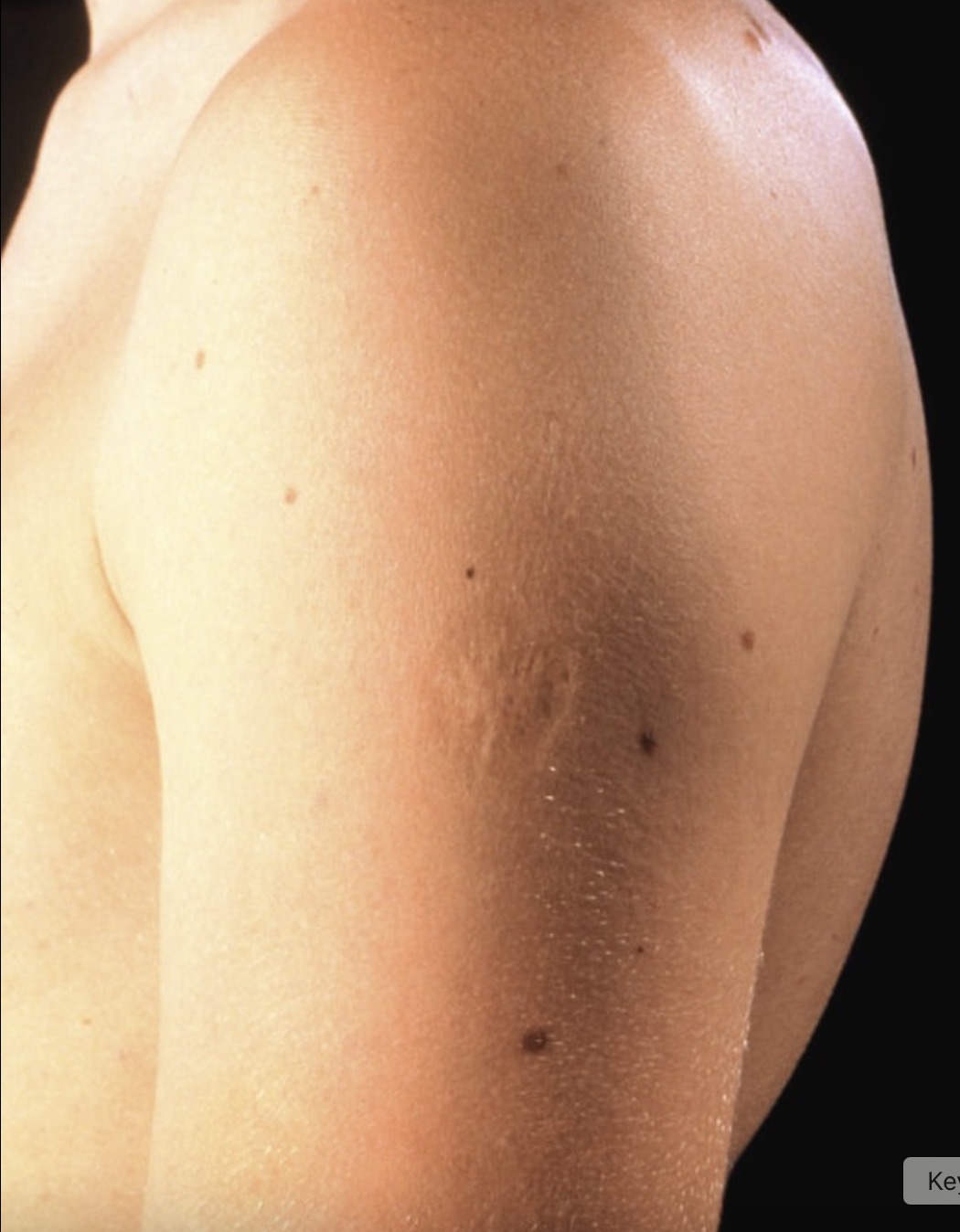Smallpox Vaccine Scars: What They Look Like and Why They Remain a Mark of History
For many people born before the 1970s, a small circular scar near the upper arm or shoulder is a quiet reminder of one of humanity’s greatest medical triumphs — the eradication of smallpox, a deadly viral disease that once claimed millions of lives each year.
If you’ve ever noticed that distinct ring-shaped scar — often a patch of small indentations surrounding a deeper center — you’ve likely seen the lasting imprint of a smallpox vaccination.
The Story Behind the Scar

Smallpox was one of history’s most feared diseases. Caused by the variola virus, it spread easily from person to person, producing high fevers, severe fatigue, and a blistering rash that left survivors with permanent scars. According to the Centers for Disease Control and Prevention (CDC), about three in ten people infected with smallpox died, while many others were left blind or disfigured.
By the mid-20th century, smallpox had become a global crisis. In response, health authorities launched a massive worldwide vaccination effort. By 1980, after years of coordinated campaigns led by the World Health Organization (WHO), smallpox became the first disease ever eradicated by human effort.
But before that victory, millions of people — including those in the United States, Europe, and Asia — received a vaccine that left behind one unmistakable sign: the smallpox scar.
What the Smallpox Vaccine Looked Like
Unlike most modern vaccines, the smallpox vaccine wasn’t injected deep into the muscle with a syringe. Instead, it was delivered through the skin using a two-pronged (bifurcated) needle dipped into a live virus solution derived from vaccinia, a virus related to smallpox but much less dangerous.
The healthcare worker administering the shot would rapidly puncture the skin 15 to 20 times in a small circular area, allowing the virus to enter just beneath the surface. Within days, a small red bump would appear.
This bump would then:
-
Swell and fill with fluid, forming a blister-like pustule
-
Break open and scab over within a week or two
-
Heal over several weeks, leaving behind a distinctive pitted scar
The process might sound intense, but it was incredibly effective — producing a visible sign that the body had developed immunity.
Why the Scar Forms

The scar itself is part of the body’s natural healing response to the localized infection caused by the vaccine. When the pustule bursts and scabs over, it triggers inflammation and collagen remodeling beneath the skin. As it heals, it leaves behind a small circular area of dense tissue, slightly depressed compared to the surrounding skin.
Because the vaccine contained a live virus, this reaction was much stronger than with typical vaccines today, which often use inactive or genetically modified virus fragments.
That’s why smallpox vaccination scars are so distinctive — no other vaccine used in modern medicine produces the same visible, permanent mark.
A Symbol of Immunity and Survival
For generations, the smallpox scar was more than just a medical mark; it was a badge of protection. In many countries, schoolchildren were required to show their vaccination scars as proof of immunity — a kind of early “vaccine passport.”
By the early 1970s, as smallpox neared eradication, routine vaccinations were phased out in most countries. In the United States, smallpox vaccination ended in 1972. Today, only certain laboratory or military personnel who work with similar viruses may still receive it.
If you were born after the mid-1970s, you likely don’t have the scar — but your parents or grandparents might.
Recognizing the Smallpox Scar
Typical features include:
-
A round mark, about the size of a pencil eraser or dime (4–10 mm)
-
A cluster of small pits or indentations surrounding a central depression
-
Usually located on the upper arm or shoulder
-
Sometimes slightly lighter or darker than the surrounding skin
It’s common for the scar to fade somewhat over time, but in most people, it remains visible for life.
From Fear to Freedom
The smallpox scar represents more than just a medical procedure — it’s a symbol of global collaboration, science, and survival.
Before eradication, smallpox was responsible for centuries of epidemics that reshaped societies. Today, the faint circular scars seen on older generations tell a very different story — one of triumph. They mark the end of a disease that once devastated humanity and remind us how far modern medicine has come.
As Dr. Donald Henderson, who led the WHO’s global smallpox eradication campaign, once said:
“That little scar on the arm isn’t just a mark. It’s a monument to what humanity can achieve when it works together.”
Sources:
-
Centers for Disease Control and Prevention (CDC) – History of Smallpox
-
World Health Organization (WHO) – Smallpox Eradication Facts
-
National Library of Medicine – Smallpox Vaccination Technique and Scar Formation
